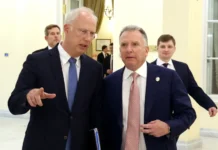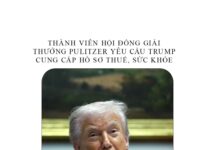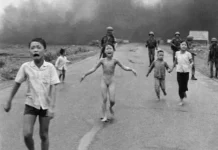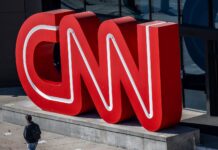(Comparative Investigative Report – English Version)
I. Introduction: Three Systems, One Logic
Vietnam, China, and Russia operate different political structures, but their power architecture around land and mediashares a common pattern:
1. State control over land → creates enormous rent-seeking opportunities
- China: land is “owned by the State/collectives,” enabling local cadres to auction land to developers at enormous margins.
- Vietnam: all land is “owned by the People, managed by the State,” enabling forced evictions and dual pricing.
- Russia: after the 1990s privatization, land & resource control consolidated under oligarchic groups aligned with political power.
2. Media is controlled or captured to legitimize land seizures and suppress public resistance
- China: strict Party propaganda; all protests framed as “social instability.”
- Vietnam: controlled pluralism; newspapers act as extended arms of the Party.
- Russia: oligarch-owned media reinforces Kremlin narratives and discredits local resistance movements.
3. Political–business alliances convert land into capital for elite groups
- China: nexus of developers + local government (e.g., Evergrande model).
- Vietnam: “sân sau” (backyard firms) connected to provincial officials.
- Russia: governors and Kremlin-linked oligarchs dominate land/resource extraction.
Vietnam’s system is smaller in scale but functionally identical—a hybrid of China’s Party-led model and Russia’s oligarchic patronage system.
II. Vietnam: A China-style land regime with a Russia-style media patronage network
Vietnam’s Land Law resembles China’s:
- citizens do not own land; they hold “land-use rights” revocable by the State.
- land seizures are justified using slogans such as “modernization,” “development,” or “public interest.”
- compensation is State-priced (low), while land is resold at market-price (high).
But Vietnam’s media system resembles Russia’s more than China’s:
China → total propaganda monopoly
The Party dictates content explicitly, censorship is direct, and journalists are never allowed to challenge the estate–state nexus.
Russia → mixture of state control and oligarch influence
Journalists may appear to investigate, but powerful editors are tied to political clans or oligarchs. “Independent debate” exists only within boundaries set by elites.
Vietnam → hybrid model
- The government controls licenses and editorial direction (China-style).
- But powerful editors function as political brokers (Russia-style).
- “Debate” is orchestrated to legitimize decisions, not to question them.
Nguyễn Công Khế is emblematic of this hybrid system:
a media figure with political influence, serving elite interests while maintaining the appearance of independent journalism.
III. Land as Power: A Cross-National Comparison
China: The world’s largest land expropriation machine
- Local governments derive 30–40% of revenue from land auctions.
- Forced evictions are common; clashes repeated across provinces.
- Land finance props up China’s entire real estate bubble.
- Media cannot challenge these projects; coverage is tightly scripted.
Russia: Land & resource corruption feed oligarchic networks
- Land privatization in the 1990s produced vast wealth concentration.
- Regional authorities forcibly evict communities for mining or oil extraction.
- Media outlets owned by oligarchs coordinate messaging with the Kremlin.
- “Debate” is permitted only between factions loyal to power.
Vietnam: A scaled-down hybrid
- Provinces depend heavily on land auctions to balance budgets.
- Forced evictions (Dương Nội, Lộc Hưng, Thủ Thiêm, Đồng Tâm…) mirror Chinese tactics.
- Developers tied to political families mirror Russia’s oligarchic patterns.
- Media is used to blame farmers (“chống đối”, “gây rối”), validate development narratives, and suppress alternative voices.
IV. Media Manipulation: Vietnam Compared to China and Russia
1. Manufactured consensus (China-style)
Vietnamese papers routinely publish headlines similar to Chinese state media:
- “Người dân đồng thuận với việc tăng giá điện”
- “Đa số cư dân ủng hộ giải tỏa đất để phát triển hạ tầng”
These mimic China’s technique of fabricating unanimity.
2. Editorial pressure via personal influence (Russia-style)
In Russia:
- Kremlin or governors call editors directly to alter headlines.
- Media bosses enforce unwritten rules benefiting political clans.
In Vietnam:
- Editors like Nguyễn Công Khế have historically acted as gatekeepers.
- “Quân xanh” (fake commenters or controlled expert voices) appear to simulate debate.
- Critical voices are filtered out algorithmically or manually.
3. Silencing investigative journalists
- China: imprisonment under charges of “subverting state power.”
- Russia: disappearance, intimidation, or criminal prosecution.
- Vietnam: journalists like Phạm Đoan Trang, Trịnh Bá Phương, Cấn Thị Thêu, Nguyễn Tường Thụy… jailed for documenting land injustice.
4. Using media as a weapon against protest movements
- China: PEOPLE’S DAILY smears petitioners as troublemakers.
- Russia: state-aligned channels label protesters foreign-funded.
- Vietnam: newspapers smear Đồng Tâm villagers as “chống người thi hành công vụ” while blocking independent reporting.
V. The Case of Nguyễn Công Khế — A Vietnamese Reflection of Chinese “propaganda chiefs” and Russian media oligarchs
To international observers, Nguyễn Công Khế resembles:
China’s model:
Propaganda officials who align media narratives with policy goals.
Russia’s model:
Editors who act as power brokers, influencing policy via selective coverage and coordinated media campaigns.
Khế’s intervention in the 1995 Decree 18/CP case — where he pressured another newspaper for publishing a contrary legal argument — mirrors practices in:
- China’s censorship bureaus
- Russia’s editorial phone calls from the Kremlin
Khế’s power to shape policy discussions around land rights shows the fusion of media authority and political networks, a hallmark of both Chinese and Russian governance.
VI. Land Conflicts: Vietnam vs. China vs. Russia
1. Vietnam & China: Mass Displacement
- Millions displaced in China for urbanization and mega-projects.
- Hundreds of thousands displaced in Vietnam since 2000 (urbanization zones, eco-towns, industrial parks).
2. Vietnam & Russia: Criminalization of Protest
- Russia: protesters charged with “extremism.”
- Vietnam: charges like “gây rối,” “chống người thi hành công vụ,” “tuyên truyền chống Nhà nước.”
3. Vietnam: The unique intersection
Vietnam combines:
- China’s political justification model
- with Russia’s propaganda–business–politics nexus
- and the same pattern of violent evictions (Đồng Tâm, Dương Nội)
The Đồng Tâm raid in 2020—where police killed Lê Đình Kình and arrested dozens—resembles:
- China’s violent land evictions in Guangdong
- Russia’s brutal crackdowns in pipeline regions like Khanty-Mansi
Both Beijing and Moscow later used state media to justify violence—exactly as Vietnam did.
VII. Why This Matters for International Organizations
Vietnam’s land–media regime cannot be understood in isolation.
It is part of a global pattern among authoritarian or hybrid regimes, where:
- Land becomes the core financial engine of local governments.
- Media is weaponized to legitimize extra-legal state violence.
- Business interests become fused with political power.
- Journalists and community leaders face systematic repression.
Understanding Vietnam’s case through comparative lenses (China & Russia) helps expose:
- the structural drivers of forced displacement,
- the political logic behind media suppression,
- and the transnational nature of authoritarian governance models.
VIII. Conclusion: Vietnam’s Model as a Miniature of China and Russia
Vietnam does not match China’s size nor Russia’s oligarchic wealth, but the structural logic is identical:
- China’s absolute state control of land
- Russia’s media–oligarch nexus
- Vietnam’s hybrid: a Party-led state using media elites as political instruments
The result is:
- dispossession of rural populations
- corruption-driven urbanization
- suppression of truth-telling
- and the distortion of public debate through media capture
International organizations must therefore approach Vietnam’s land conflicts not merely as local governance issues, but as part of a broader authoritarian model of resource extraction reinforced by information control — the same blueprint seen in Beijing and Moscow.


































